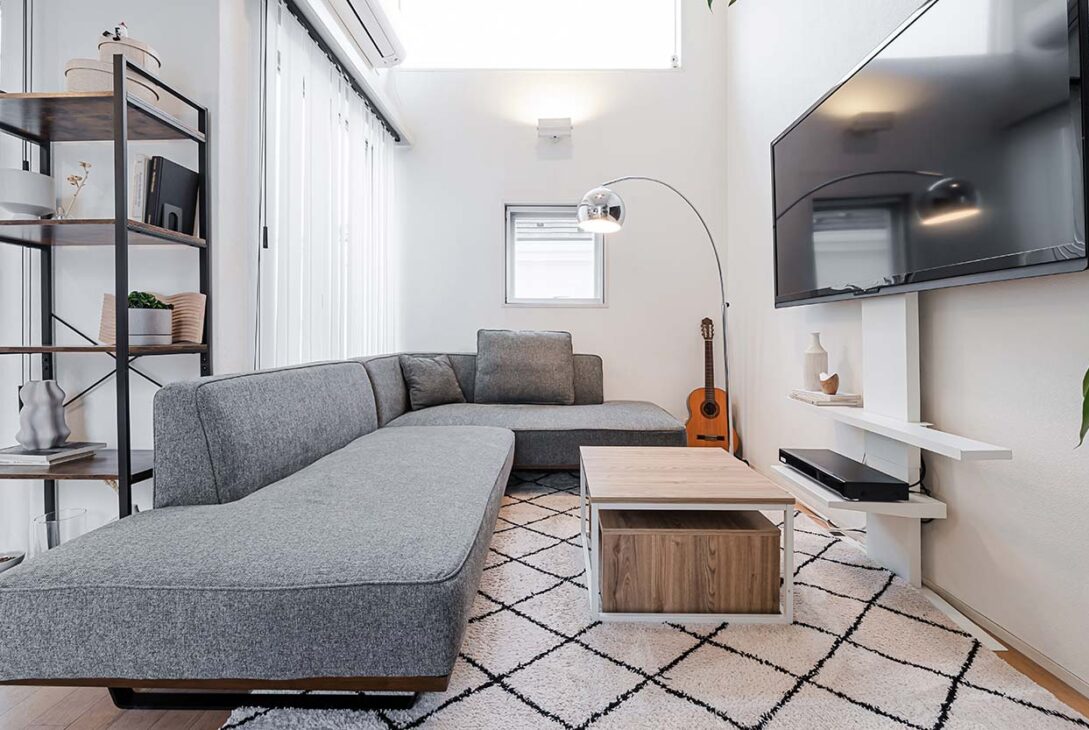Not metaphorically. I mean literally. A friend brought home this Yoruba indigo-dyed rug from Lagos—full of squiggles and sun-like bursts that looked like they were chanting something. And then, on her shelf, this Japanese tea bowl, chipped, glued back with gold veins—what they call kintsugi—sat there like it knew secrets. And something about that combo, the quiet broken ceramic beside the unruly color, felt like two spirits arguing, gently. Not hostile. More like, one says “sit still” and the other’s like “okay, but can I dance while I wait?”
Afro-Japanese fusion decor is… messy. Not in the sense of cluttered. More like… it’s emotionally inconsistent. And I mean that in the most beautiful way possible.
Zen minimalism meets pattern chaos
Wabi-sabi. People throw that word around like it’s scented candle magic. But the idea—loving the imperfect, the incomplete, the impermanent—gets weirdly specific when you start pairing it with African textiles that scream joy in ten directions.
There’s this odd tension. Japanese interiors say: here’s a wooden bowl, maybe a fern, and hush now. African fabrics, like kente or kuba, practically yell: “I have arrived, and I brought my cousins!” It’s not polite. It’s proud.
“Less is more” as many minimalists would say, is truly the simplest, yet conceptually complicated design philosophy. The uncluttered and serene design philosophy of the Japanese minimalism came from thousands of year of Japanese tradition. This concept was originated from Japanese Zen Buddhism, a religious that focus a lot on inner mental peace, instead of materialism. Japanese minimalism encourages a serene, simple and uncluttering lifestyle, emphasizing strongly on balance, mindfulness, simplicity and nature.
https://www.mokuomo.com/blogs/blog/japanese-minimalism-simply-is-beauty
And somehow… they look right together? Maybe it’s that both traditions, at their core, hate mass-produced nonsense. You won’t find glossy Ikea veneers here. A hand-carved Dogon chair next to a tatami mat? Doesn’t match. But it does belong.
One time, I saw a Ghanaian Adinkra wall hanging inside a Kyoto-style alcove, and I swear to you—I stared at it for ten minutes, trying to figure out if my brain had finally short-circuited. But it was peaceful. Like, they respected each other’s silence.
Plants. Lots of them. But not in the trendy Instagram way.
You know that thing where someone sticks a fiddle leaf fig in a corner and calls it personality? Yeah, that’s not what we’re talking about.
Afro-Japanese fusion tends to make plants feel ancestral, like they’ve been there forever. A giant rubber tree leaning toward a shoji screen. Snake plants tucked into baskets from Senegal. They feel like they’re part of the architecture. Not accessories. Like if you moved them, the house would throw a fit.
If you love the simplicity of Scandinavian design yet you yearn for the elegance of Japanese aesthetics, then the Japandi influence will not be lost on you. It’s the epitome of sleek interiors and is now a discerning factor in the plant space too. While Japanese plants themselves are a winning addition to any room, these plants offer the best of both worlds. And the one trait they all carry is their simple yet standout silhouettes.
https://www.livingetc.com/advice/japandi-plants
My neighbor has a hibiscus plant he got from his grandmother in Nigeria. It’s… enormous. Its petals land in his tiny sand garden like drunk confetti. But it works. Somehow.
Earth-tones vs. Bold Chaos: The palette is confusing on purpose
Colors here don’t agree. That’s half the fun.
Wabi-sabi interiors lean into washed-out browns, clay greys, the kind of greens you only see in fog. But then boom—you hang a wax print cloth in hot pink and acid yellow, and suddenly the room feels like it woke up too fast.
It’s not elegant. It’s emotional.
There’s a Yoruba proverb, “A man with no cloth is not necessarily naked.” Japanese interiors whisper the same thing in their own way. Strip it down, but make what’s left matter. You’ll find a Senegalese mudcloth draped over a reclaimed hinoki bench. The mudcloth tells stories. The bench has been through things. They’re both… tired but wise?
Creating a warm and inviting atmosphere in your home is important for both your physical and mental well-being. Your home is a sanctuary where you can relax and recharge after a long day, and incorporating earth-tone colours into your decor can help you achieve that peaceful feeling. Earth tones are colours that are commonly found in nature, such as browns, greens, and yellows. They have a natural warmth and can help create a cosy and comfortable space in your home.
https://makingagreenlifebylily.com/japandi-earth-tone-colour/
Ceramics and Carvings: Handmade things with scars
There’s something spiritual—yes, spiritual—in the way both cultures treat objects.
In African traditions, especially from Mali or Benin, carvings aren’t decor. They’re memory. Sometimes protection. Japanese tea bowls are judged for their irregularity. A wobbly rim is considered… poetic.
So when you put them together? It doesn’t scream cohesion. It mumbles lineage.
I once saw a Dogon mask placed beside a Japanese sake bottle. Both hand-made, slightly asymmetrical. Both looking like they had seen generations come and go. No one had polished them for photos. They just were. I don’t know why that felt like a blessing.
Chaos layered with quiet: furniture and flow
Ever sit on a Moroccan pouf and sip matcha? Weirdly… amazing.
Afro-Japanese fusion decor doesn’t believe in matching furniture sets. In fact, it’s a little allergic to uniformity. You’ll see a Japanese zaisu chair next to a carved Ashanti stool, and neither one is trying to match. But both seem to listen to each other.
Also, there’s this obsession with the floor. Japanese homes live on it. Tatami, zabuton, the occasional futon. African homes? Floor mats, cowhide rugs, woven things from ancestors who really understood craftsmanship. It’s almost like both cultures are trying to stay close to the earth, literally. Maybe that’s why they vibe so well.
Lighting: dim, shadowy, kinda haunted
Don’t go expecting LED strips and daylight bulbs. This ain’t that.
You get paper lanterns, maybe. And woven raffia shades from Ghana. Light that spills, not blasts. Corners that stay dark on purpose. It’s not mood lighting. It’s more like… ancestral lighting? I dunno. Hard to explain.
But it matters. Like the room knows secrets it’s not gonna tell you unless you shut up and sit down for a minute.
Is it a trend? Maybe. But it shouldn’t be.
There’s a risk here, and I’ve seen it play out.
Someone picks up a few African masks, throws them beside a bonsai tree, and calls it “Afro-Japanese aesthetic.” But this isn’t collage art. It’s not just slapping two exotic things together and hoping they match on Pinterest.
Real fusion respects the philosophies. Wabi-sabi isn’t just chipped cups—it’s a way of seeing the world. African decor, especially from the West and South, often isn’t even “decor” in the Western sense. It’s… functional mythology? Something like that.
You gotta live with these pieces. Let them argue. Let them confuse you.
Final-ish thoughts (that’ll probably change tomorrow)
Afro-Japanese fusion isn’t clean. It isn’t curated. It’s not here to “wow” guests or get likes. It’s awkward sometimes. Moody. But it feels. It breathes like a human. Not like a catalog.
If you’re after a space that looks consistent, this ain’t for you. But if you want a room that argues, forgives, sighs, and keeps secrets—this combo might be the weird hug you didn’t know you needed.
And maybe next time you see a broken bowl and a dancing cloth side by side… don’t fix ‘em. Just… listen.
Last modified: July 24, 2025



